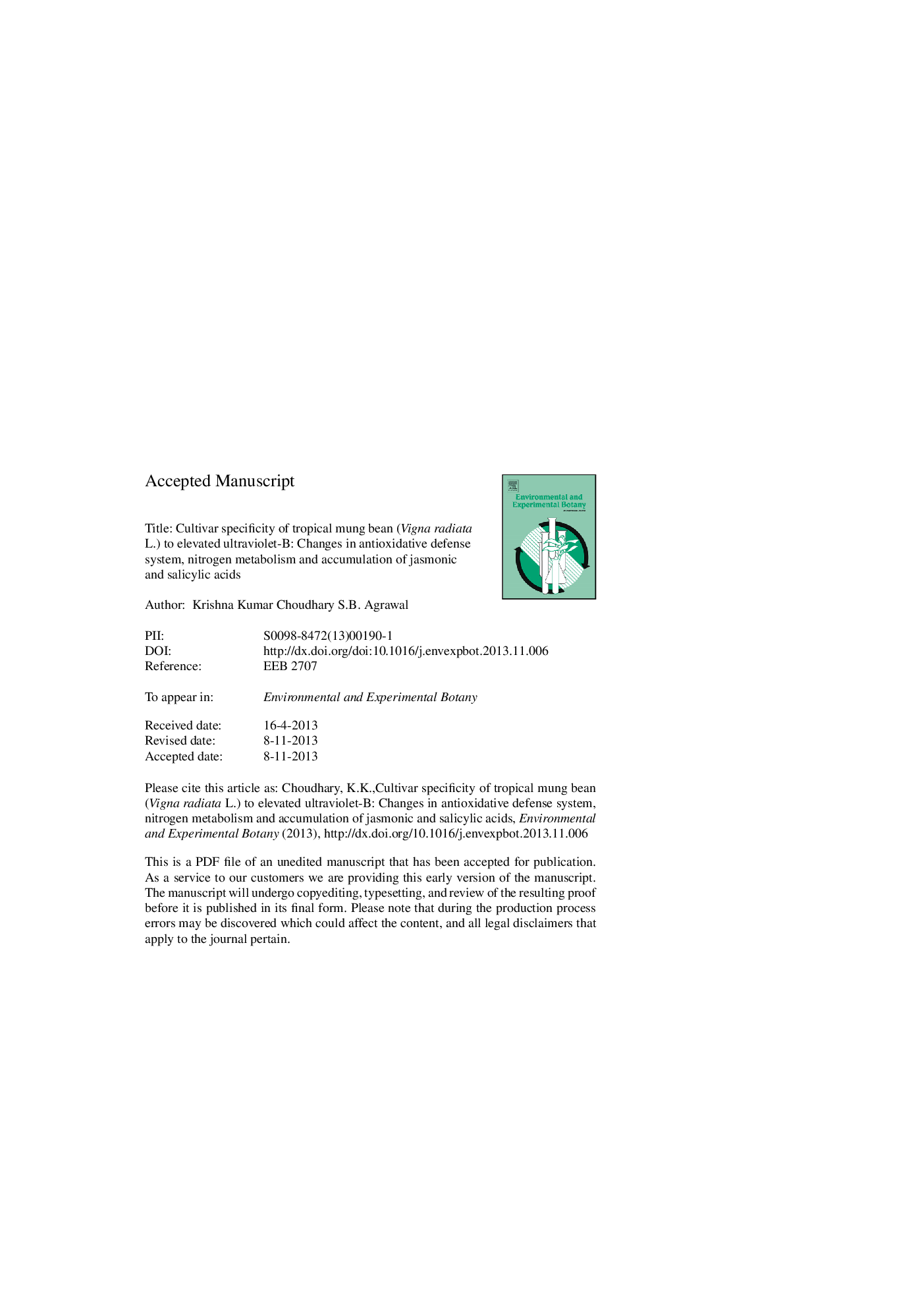| Article ID | Journal | Published Year | Pages | File Type |
|---|---|---|---|---|
| 6388930 | Environmental and Experimental Botany | 2014 | 40 Pages |
Abstract
Ultraviolet-B (UV-B) radiation induces diverse morphological and physiological changes including the hormonal regulations in plants, but the actual mechanisms leading to integrated responses are not well understood at cultivar level. In the present study, we systematically analyzed the responses of two nodulated tropical mung bean cultivars (HUM 1 and HUM 12) to elevated UV-B (ambient + 7.2 kJ mâ2 dayâ1). Elevated UV-B caused negative effects on measured parameters of both the cultivars in various ways but the magnitude of negative effect was more in HUM 1 compared to HUM 12. The induction of flavonoids under elevated UV-B neither provided sufficient protection to the photosynthetic tissue nor helped in increasing the biological nitrogen fixation. Nitrogen fixation and assimilation were negatively affected under elevated UV-B as depicted by decline in the activities of nitrogenase, nitrate reductase, nitrite reductase and leghaemoglobin contents. Stimulation in antioxidative defense system of plant was not effective under elevated UV-B to completely detoxify reactive oxygen species (ROS) and it was cultivar specific. More accumulation of salicylic acid in HUM 1 depicted its higher sensitivity to elevated UV-B, while higher induction of jasmonic acid in HUM 12 in addition to other defense strategies (enzymatic and non-enzymatic antioxidants) to check ROS production, made it more resistant against applied stress with respect to growth and yield responses.
Related Topics
Life Sciences
Agricultural and Biological Sciences
Ecology, Evolution, Behavior and Systematics
Authors
Krishna Kumar Choudhary, S.B. Agrawal,
